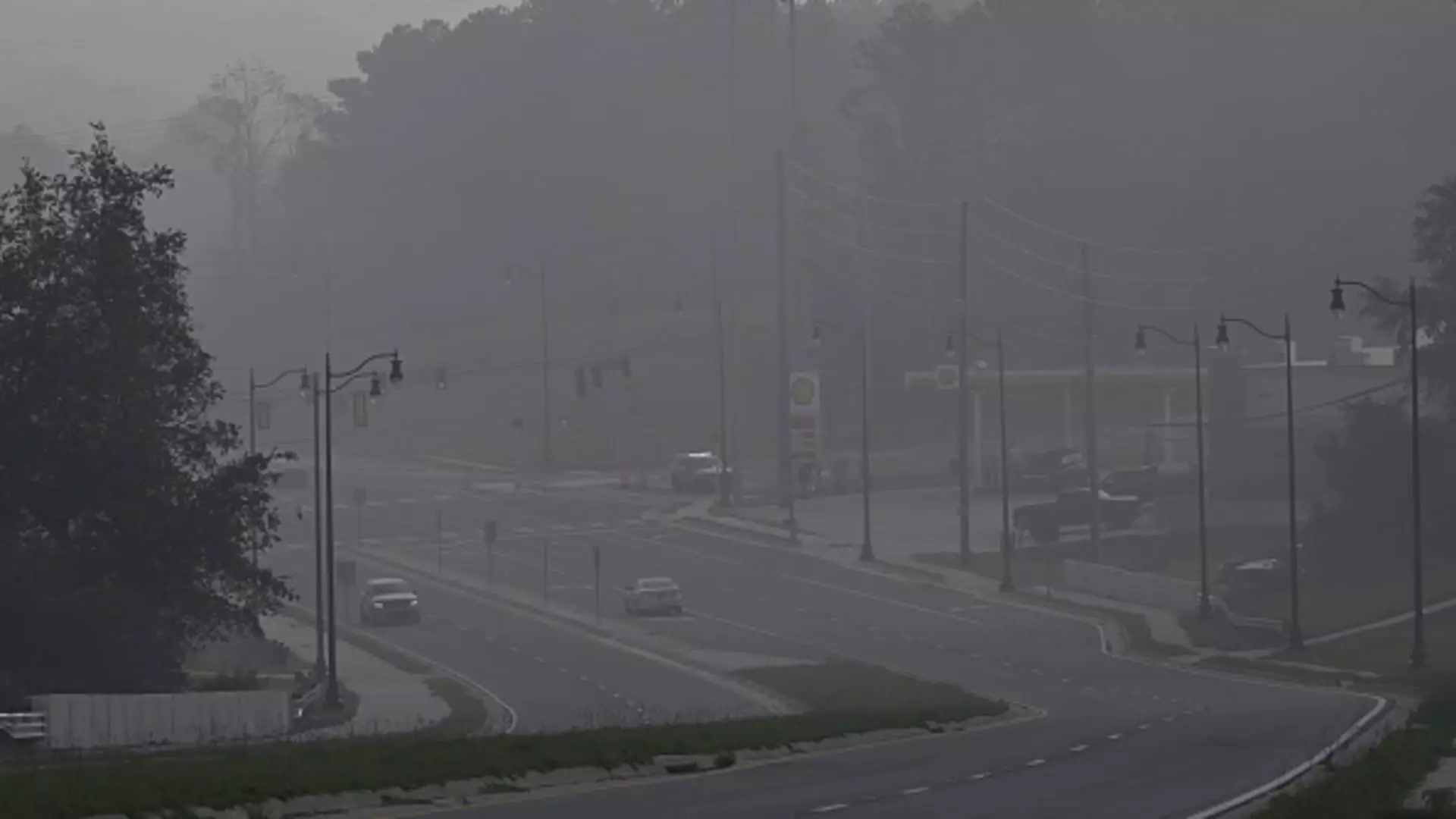The recent incident at a chemical plant in Conyers, Georgia, has raised serious concerns about air quality and public health in the Atlanta metropolitan area. A fire that erupted at the BioLab facility released significant amounts of chlorine into the atmosphere, resulting in a widespread shelter-in-place warning for local residents. This alarming situation has sparked frustration and confusion among the community, shedding light on the need for better communication and preparedness in dealing with chemical hazards.
The fire at the BioLab plant occurred early Sunday morning, around 5 a.m., and was extinguished, but not without repercussions. As authorities worked to stabilize the situation, elevated chlorine levels were detected nearby. The Georgia Emergency Management and Homeland Security Agency promptly issued alerts indicating that residents would likely face haze and a chlorine smell due to shifting winds. This communicated the severity of the scenario and the importance of monitoring air quality in affected regions.
As news spread, residents learned they were encouraged to remain indoors, a directive aimed at minimizing exposure to harmful airborne particulates. Unfortunately, this situation left many people agitated; responses on social media described physical discomfort and medical issues in the wake of the incident. Such sentiments underscore a growing fear concerning the safety of living near chemical processing plants.
The discontent expressed by Rockdale County residents highlights a significant gap in trust between the community and its officials. Many individuals voiced their fears and frustrations about conflicting messages regarding air safety. For people like Thomas Chastain, who works nearby, the continuous variations in advisories provided by local authorities only exacerbates anxiety regarding the pollutants they were exposed to.
Reports from community members indicated instances of acute health issues, such as chest pain and respiratory problems, further raising alarms. Comments like those shared on social media depict a rising trepidation towards the continuity of safe air quality. The sheer volume of public outcry is a clear indication that transparency and consistency in communication from emergency agencies is crucial during crises of this nature.
Chlorine gas poses various health risks, particularly for those with pre-existing heart or respiratory conditions. Irritation of the eyes, throat, and lungs can lead to more serious symptoms, necessitating a heightened dialogue about chemical safety. With experts stating that the chlorine levels monitored were within “safe” limits, it prompts questions about the criteria used to define safety.
Moreover, there remains an ‘invisible threat’ to health; those living close to chemical plants could be silently affected long after such events. In situations like this, residents should be equipped with knowledge about the potential long-term effects of chemical exposure and the necessary precautions they should take.
In light of the community’s growing frustrations, efforts such as petitions advocating for the removal of hazardous chemical operations from residential areas are vital. Residents are not only calling for immediate action but for systematic changes that prioritize public safety over industrial convenience.
Furthermore, this incident should serve as a wake-up call for both industry regulators and the facilities themselves. A thorough reevaluation of safety protocols and emergency response strategies is essential to prevent future incidents from undermining public trust and safety. Moving forward, establishing clear communication channels and improving the public’s access to pertinent information regarding chemical safety will help bridge the gap between agencies and the communities they serve.
The BioLab fire in Conyers is more than just a localized incident; it is part of a broader issue regarding chemical management and environmental safety in urban settings. Ensuring the well-being of residents needs to be a priority, accompanied by robust community engagement and proactive regulatory measures. As Atlanta navigates this crisis, it is imperative that lessons are learned, fostering a resilient framework that guarantees both accountability and safety in the face of environmental threats.


Leave a Reply